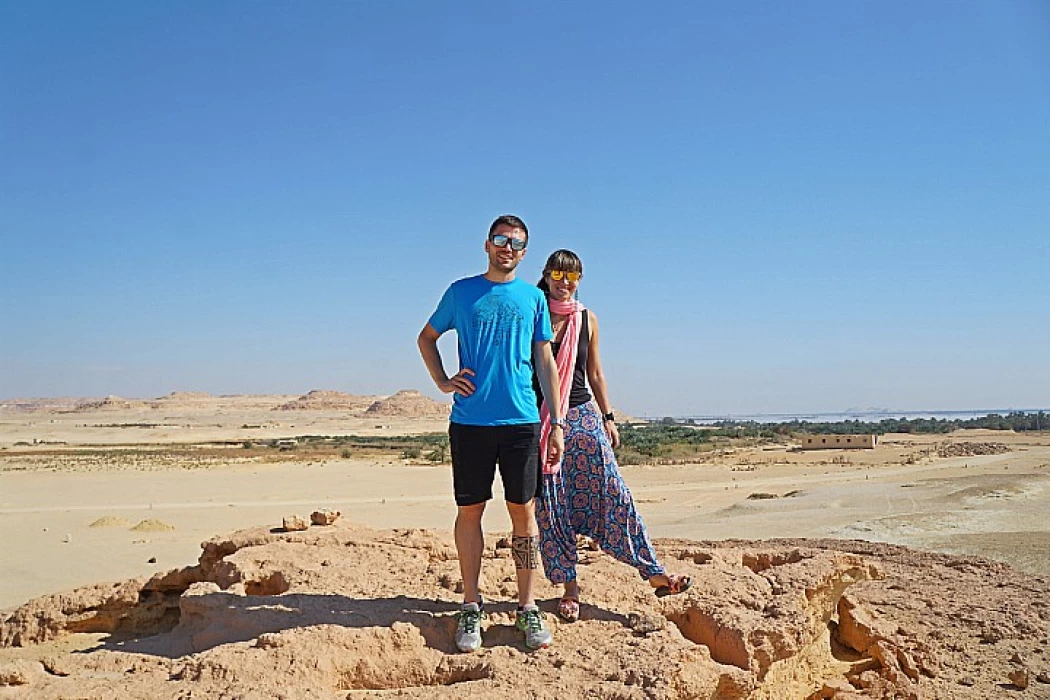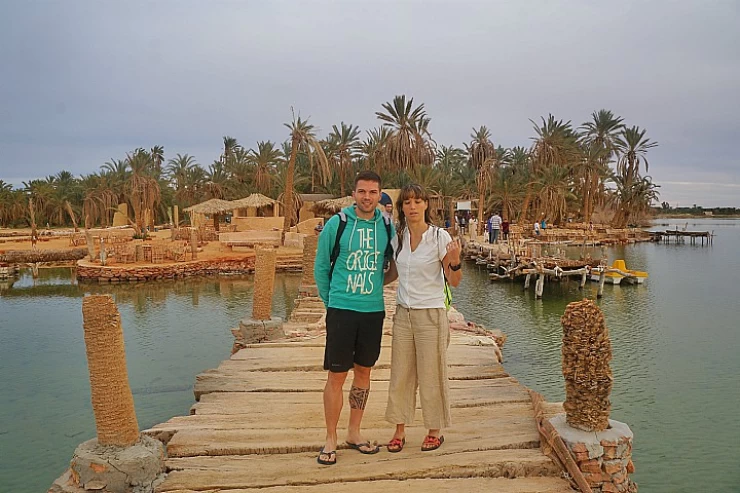
Dakrour Mountain in Siwa Oasis
Mount Dakrour is a significant tourist and cultural landmark in the Egyptian oasis of Siwa, situated in the southeastern part of the oasis, and is renowned for its medical tourism. The hot sands of Jebel El Dakrour are renowned for their therapeutic benefits, attracting visitors who flock to this area for treatments in the hot sand to alleviate joint pain, rheumatism, and back problems. The people of Siwa Oasis celebrate an annual holiday on this mountain, gathering in October under the full moon to renew the spirit of reconciliation and peace between the tribes. This includes a ritual of joint eating.
Historical and archaeological significance:
The mountain has an ancient history and is considered an important archaeological site, as it contains carved caves and some tombs, and the Amazigh mentioned it as "adrarambriq" after a legendary Siouan King who is believed to have buried his treasures there.
Location and features:
The mountain is located in the southeastern part of the Siwa Oasis. It consists of two peaks, the first is called Nazareth and contains a historical grotto called Tanashur.
It is currently considered one of the most important tourist destinations for medical tourism and natural healing, which are intended by visitors from various Arab and international destinations, and one of the most important information that may interest you about it is the following:
Siwa is famous for the presence of Mount Dakrour in it, and its beautiful oases and eyes that treat many diseases, such as psoriasis, gastrointestinal diseases, and rheumatic diseases.
Burial therapy at Jebel El-Dakrour
The mountain has gained its importance since ancient times due to its ability to treat rheumatic diseases, joint pain, general weakness, and asthenia. gout, diseases of the spine and its pains, skin diseases, and accumulated fat in the body.
In it, the treatment is carried out by immersing the body in hot sand (burial therapy) by specialized elders for a period of between a quarter and a half hours a day and for two weeks during the summer months, at specified hours of the day.
It is said that scientific experiments have proven that burial with Siwa sand helps to cure many diseases, and burial is usually carried out in the sand by digging a horizontal hole equal to the height of the person to be treated, in the morning at seven o'clock.
Then leave the hole until its sand glows from the sun's rays before placing the person in it at exactly one o'clock in the afternoon. during the treatment, the person usually wears short trousers made of light fabric, which are covered with hot sand, and puts a cover on his head to protect him from the sun's Rays.
Usually, the sand surrounding a person is changed several times during the burial process, depending on the duration of his stay, which varies depending on his endurance.
After getting out of the sand, the patient is wrapped in a wool blanket, brought into one of the tents located there, and given a hot fenugreek drink, anointing his body with olive oil.
Accommodation near Mount El Dakrour
There are many camps available near Jebel El Dakrour suitable for staying in them, including:
Camp d'acrur.
Camp Ali Khaled.
Amon for sand baths and medical tourism.
General information about Mount Dacru
It houses two carved caves dating back to the early Ptolemaic period, and also houses two tombs. The mountain consists of two peaks, the first of which is called Nazareth, and the other is rare. and at the first peak of which there is a grotto carved into the rock, and below it is an archaeological place known as the Sultan's House.















